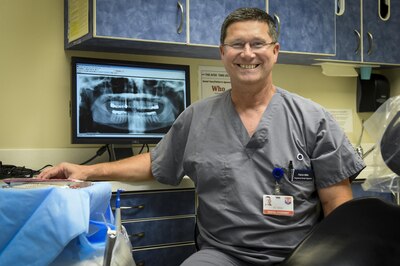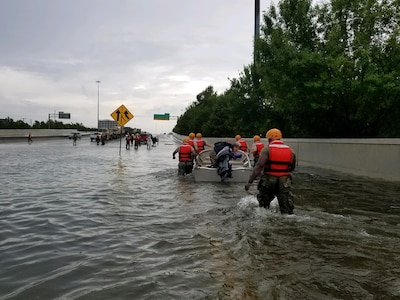By Commander, Third Fleet and Space and Naval Warfare
Systems Command
SAN DIEGO, Aug. 29, 2017 — In its 15th year of execution,
the Trident Warrior exercise explored innovative solutions through fleet
experimentation during various evolutions off the coast of Southern California
from June to August 2017.
Directed by the Navy Warfare Development Command and Space
and Naval Warfare Systems Command, and supported by the Third Fleet, TW17
featured at-sea experimentation of more than 20 critical maritime initiatives.
Participants in TW17 included organizations such as Naval
Warfare Systems Command, Systems Center Pacific; the Program Executive Office
for Command, Control, Communications, Computers and Intelligence; Naval
Information Forces; Johns Hopkins University Applied Physics Laboratory; and
the Office of Naval Research.
TW experiments are designed to fast-track the introduction
of new capabilities, innovative technologies, and tactics, techniques and
procedures to aid maritime forces in all domains of warfare -- air, land, sea
and cyber.
Unique Exercise
“Trident Warrior is exceptionally unique,” said Dan Hallock,
the exercise’s deputy director. “The event provides a venue to dynamically experiment
with new ideas and innovations in a real-world environment. Each initiative is
put directly into the hands of sailors and Marines currently serving our fleet
and then the initiative is evaluated for warfighting effectiveness. This
process enables warfighters to utilize Trident Warrior experimentation to
examine an experiment’s potential and influence the direction of development
and implementation. The resulting enhanced capabilities allow individuals to
perform their job more effectively and efficiently.”
TW17 took advantage of previously scheduled ship training
events to leverage maximum experimentation opportunities with minimum cost and
impact on Fleet operations. Experiments were completed by temporarily deploying
advanced capabilities on fleet assets to collect real-world performance data
and feedback from users during the underway experimentation period. Data
collected throughout the experiments will be provided to Navy decision makers
as recommendations regarding future capability investments for the fleet.
Participants included the aircraft carrier USS Theodore
Roosevelt; the guided missile cruiser USS Bunker Hill; the guided missile
destroyers USS Halsey, USS Preble, USS Sampson and USS Milius; the Los
Angeles-class fast attack submarine USS Pasadena; and the experimental
medium-displacement unmanned surface vehicle, also known as Sea Hunter.
The TW process specifically aligns each initiative into
focus areas to include: electromagnetic maneuver warfare; agile command and
control; cybersecurity; and intelligence, surveillance and reconnaissance. Once
the initiatives are aligned under a designated focus area, the TW team works
with the sponsors of each initiative to develop an experiment designed to
address issues the technology is targeting.
Answers to Critical Questions
“Trident Warrior allows engineers, scientists and the
operators to answer critical questions regarding the development of
technology,” Hallock said. “We need to think if the initiative will reduce
communication time and by how much. We can actually experiment during Trident
Warrior and find out. Depending on what was learned during experimentation, we
then work with the sponsors and requirements personnel to determine which
initiatives have the potential to be accelerated for acquisition and which
require further development. The end goal is to get the mature technology into
the hands of the warfighter as soon as possible.”
Some of the TW17 experiment initiatives were the automated
dynamics quality of service and visualization tool, or ADVANCE; gun augmented
reality; a command-and-control experiment; refractivity-from-radio; and
long-distance high and bandwidth laser communications.
ADVANCE, sponsored by Systems Center Pacific, serves as an
automated network bandwidth tool that gives any Navy ship the ability to
dynamically adjust the priority of network flow and usage. During TW17, ADVANCE
was tested on board the Theodore Roosevelt.
“This capability is exactly the direction we need to go,”
said Navy Cmdr. Nichol Schine, the combat systems officer for the Theodore
Roosevelt. “My whole department was impressed with how ADVANCE improved the
flow of information and how dependable the system was out at sea.”
Gun-augmented reality, also sponsored by SSC Pacific,
demonstrated its capabilities on board the Bunker Hill during the first phase
of TW17. The augmented reality helmet provides enhanced visual and aural
communication to .50-caliber gun crews and the ship’s bridge teams.
The command-and-control experiment, sponsored by the Navy’s
Command and Control Systems Program Office, installed a strike-group-level
planning tool on board the Theodore Roosevelt, which provided the capability
for an automated rehearsal of an entire future operation. This automation
determined a detailed scheme of maneuver alerting to conflicts and time
distance issues.
The “refractivity from radio with web-based tools”
initiative tested a device that monitored actual radio frequency signals to
provide the ability to predict and display red and blue radar, as well as
electronic warfare detection ranges. This initiative was also sponsored by
Systems Center Pacific and tested on board the Preble.
Sponsored by Johns Hopkins University Applied Physics
Laboratory, the long distance H/B laser communications initiative demonstrated
a ship-to-shore and ship-to-ship laser communication capability. While on board
the Sea Hunter for TW17, the laser provided close to 10 gigabits per second of
error-free data, voice and video transfer.
Trident Warrior analysts continue to compile data from the
events to determine which initiatives should be recommended for follow-on
actions.
Navy Vice Adm. Nora Tyson, the Third Fleet commander,
observed several events during TW17 and was genuinely impressed with the
initiatives and urgency to get new ideas into the hands of the warfighter.
“In the end, that’s what this is all about,” she said.
“Saving time, saving money and, most importantly, giving our sailors and
Marines the right tools to make them more effective warfighters … which will
help save lives. Next year’s Trident Warrior is currently scheduled alongside
Exercise Rim of the Pacific. Our international partners will appreciate the new
technologies and concepts being developed to improve the maritime warfighting
domain.”








